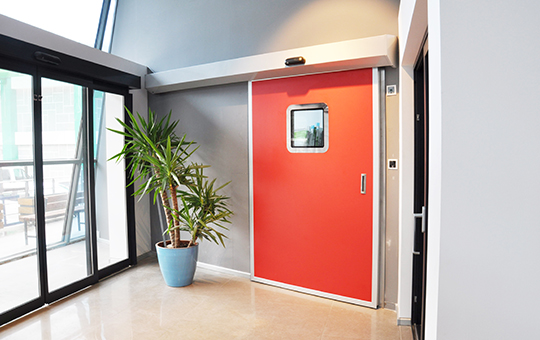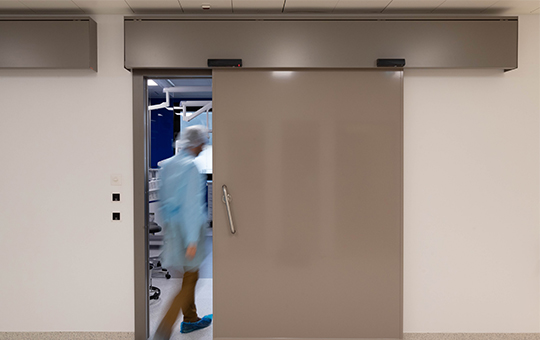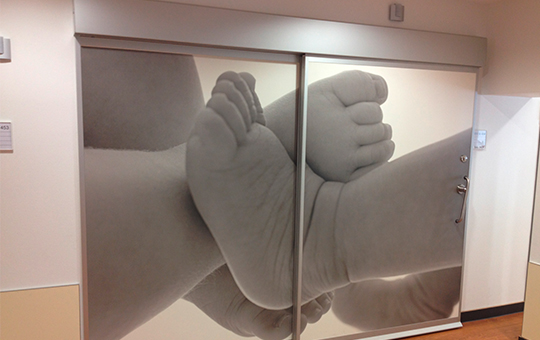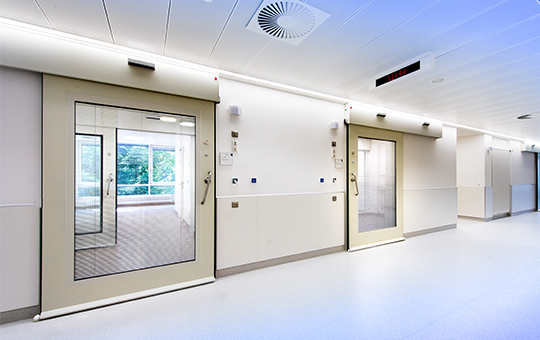Elevating Health Standards
How Hygienic Doors Contribute to Public Safety
In an era where public health and safety are more critical than ever, innovative solutions are continuously sought to mitigate the spread of germs, viruses and diseases. Among these innovations, the hygienic door stands out as a pivotal advancement in promoting a cleaner, safer environment, especially in healthcare and laboratory facilities. By integrating cutting-edge technology and design, hygienic doors are playing an instrumental role in elevating health standards and safety, making them an essential feature in any health-conscious setting. This article will delve into the definition of a hygienic door, pinpointing the key features that set it apart from standard doors.
You'll explore the various applications of hygienic doors, not just in healthcare facilities but across numerous environments where sanitation and cleanliness are paramount. The benefits of using hygienic doors will be highlighted, demonstrating their importance in preventing the transmission of pathogens and ensuring a hygienic barrier between different areas. By the conclusion, you'll have a comprehensive understanding of how hygienic doors contribute to public safety and why they are becoming an indispensable part of modern architecture in health-related and other premises.
Definition of a Hygienic Door
Basic Concept
Hygienic doors are engineered for environments where cleanliness and durability are paramount. Unlike standard doors made from materials like steel, timber, or laminate, which easily mark and require frequent maintenance, hygienic doors offer a superior solution. They are designed to withstand heavy usage and are less prone to wear and tear. They are crafted from materials that do not easily dent and therefore rarely require in-situ repairs when impacted, making them the best choice for high-traffic areas.
Importance in Various Industries
- Healthcare and Laboratory Settings: In sectors where hygiene takes precedence, such as hospitals and labs, selecting the right door can significantly impact infection control. Hygienic doors, especially those made from Glass Reinforced Polyester (GRP), are crucial. Their seamless, smooth construction doesn't harbour bacteria and is resistant to moisture and disinfectants, aiding in preventing the spread of infections like MRSA.
- Food Production Facilities: For the food industry, adhering to Good Manufacturing Practice (GMP) requirements is essential. Hygienic doors made from inorganic materials like GRP are water-resistant and do not warp, rust, or rot, making them ideal for areas requiring frequent washdowns. Plus their seamless construction and smooth surface make them easy to clean and disinfect, further ensuring a sanitary environment.
- High Hygiene Areas: In environments demanding stringent hygiene standards, such as quarantine wards or biological labs, hygienic doors play a crucial role. They are often equipped with special coatings or properties that are anti-bacterial, anti-viral, and antimicrobial. The seals used also preventing dust and contaminated particles from entering sterilized areas, something essential for maintaining the clean environment necessary for scientific experiments or patient care.




Hygienic Doors Need to be Customisable
This type of doors need to be not only functional but also customizable, with options for automation, access control, and airtight sealing to suit various applications. Additionally, they are available in a wide range of colours to match facility aesthetics while meeting regulatory approvals for use in regulated facilities under the required healthcare standards.
The hygienic doors supplied by Record can be customised in a variety of ways:-
- They can be provided with Hermetic seals up to 100pa
- Fitted with a radiation protection core which stops X-rays and Gamma rays
- Can be fitted with extra noise dampening fittings to ensure a quiet environment
- Extra fire resistance can be specified, the door leafs also being rated as fire resistant
- Can have handles on both sides, this normally being stainless steel at the V2A rating
- Where natural light needs to be enhanced, glass insets can be used
- The doors can be laminated in various colours and designs
- Can be provided in sliding, swing and other configurations where space is limited
Key Features of Hygienic Doors
Materials Used
Hygienic doors are primarily constructed from Glass Reinforced Polyester (GRP), a material known for its robustness and ability to resist environmental stressors. Unlike traditional materials like timber or steel, GRP does not warp, swell, rot, or rust, making it ideal for areas that require high standards of cleanliness and frequent cleaning. This inorganic material is also completely water-resistant, enhancing its longevity and maintaining its structural integrity even under rigorous cleaning regimes.
Design and Construction
The design of hygienic doors is tailored to prevent the accumulation of dirt and bacteria. These doors are crafted in a seamless and smooth way, eliminating ledges, recesses, or right angles where contaminants might gather. Additionally, the doors are equipped with features such as hermetic sealing to control air quality and prevent cross-contamination. The seamless nature of the construction ensures there are no cavities or crevices that could harbor bacteria or dirt, making them particularly suitable for healthcare and food production facilities.
Special Coatings and Treatments
Hygienic doors often receive special coatings and treatments to enhance their antimicrobial properties. These treatments ensure the doors are not only resistant to physical damage but also provide barriers against bacterial, viral, and microbial threats. The coatings are integral to the door's material, ensuring they do not diminish over time or through impact. This makes hygienic doors a critical component in environments like hospitals, laboratories, and food processing plants, where maintaining sterile conditions is paramount.
Benefits of Using Hygienic Doors
Enhanced Infection Control
Hygienic doors significantly reduce the spread of germs and infections, making them vital in healthcare and public settings. The smooth, seamless surfaces of these doors prevent the accumulation of bacteria and are easy to clean, supporting stringent sanitation protocols. Advanced materials like GRP and PVC used in these doors resist microbial growth and withstand harsh cleaning agents, which is crucial in combating pathogens like MRSA.
Durability and Maintenance
These doors are designed to endure high traffic and harsh environments without compromising on performance. Unlike traditional materials that can dent or corrode, hygienic doors maintain their integrity over time. The use of robust materials like GRP also ensures that the doors do not require frequent repairs or replacements, making them a durable choice for any setting. Additionally, the seamless construction minimizes areas where dust and dirt can accumulate, simplifying maintenance and cleaning efforts.
Cost-Effectiveness
Investing in hygienic doors can lead to significant cost savings over time. Their durable construction reduces the need for frequent maintenance and replacement, both of which can be costly. Moreover, their ability to maintain hygiene standards helps prevent health-related liabilities, potentially reducing legal challenges and any challenges on the level of sanitation. Simply put hygienic doors offer a long-term, cost-effective solution by enhancing the overall safety and cleanliness of facilities.
Conclusion
Through our exploration of the innovative role hygienic doors play in maintaining public safety and elevating health standards, we've understood their critical importance across various sectors. From healthcare facilities to food processing plants, the integration of hygienic doors equipped with state-of-the-art materials like Glass Reinforced Polyester (GRP) emerges as a fundamental strategy in combating the spread of pathogens. The unique characteristics—durability, resistance to contaminants, and ease of maintenance—underscore hygienic doors not just as an option but as a necessity for ensuring a sterile, clean environment, thereby preventing infections and enhancing public safety.
The adoption of hygienic doors offers a pragmatic approach toward improving hygiene and operational efficiency in environments where cleanliness is paramount. Their benefits, spanning enhanced infection control, durability, and cost-effectiveness, extend beyond the immediate gains of sanitation to include long-term health and financial advantages. As society continues to prioritize health and safety, the significance of incorporating hygienic doors becomes increasingly important, warranting further attention and adoption across industries striving for higher sanitary and health standards.




